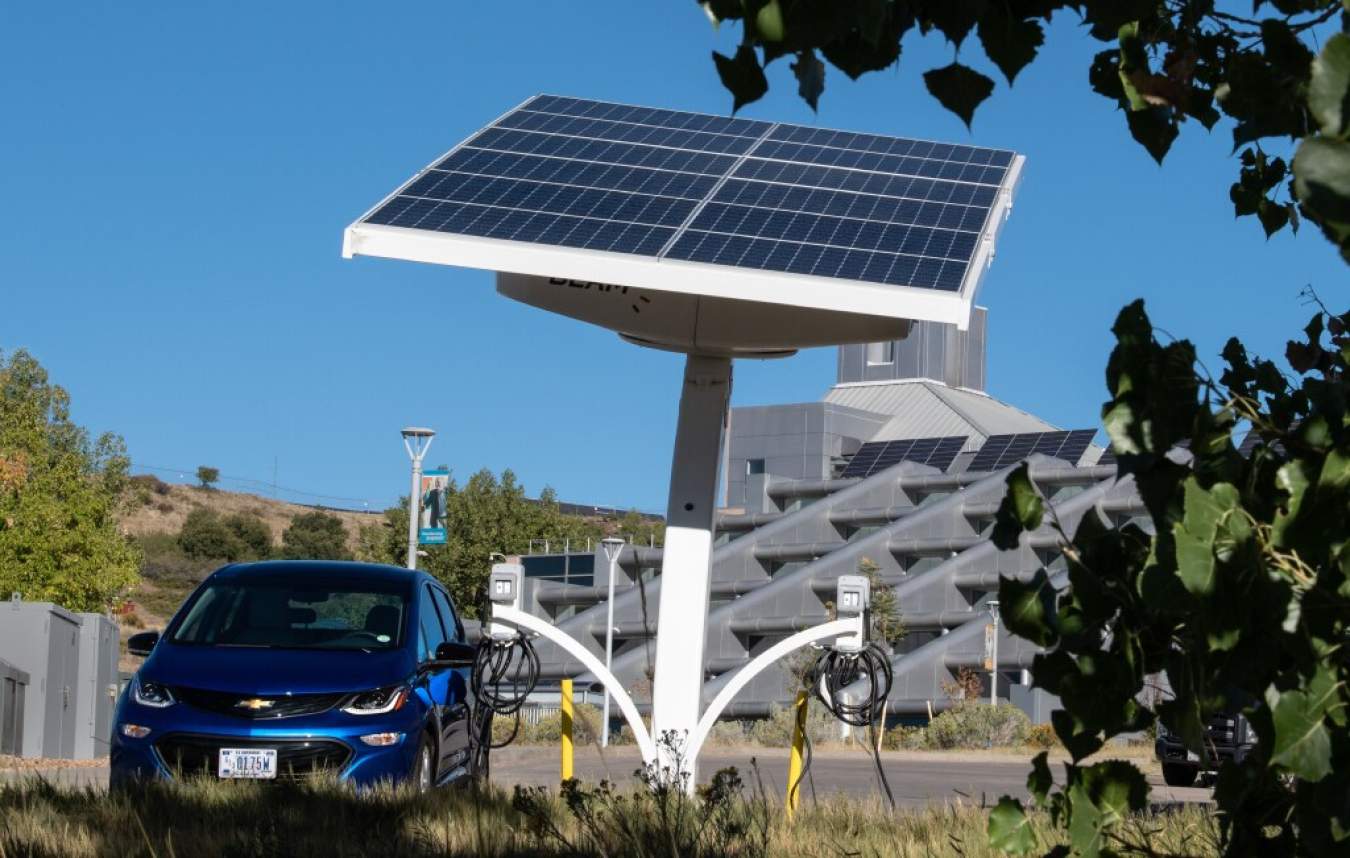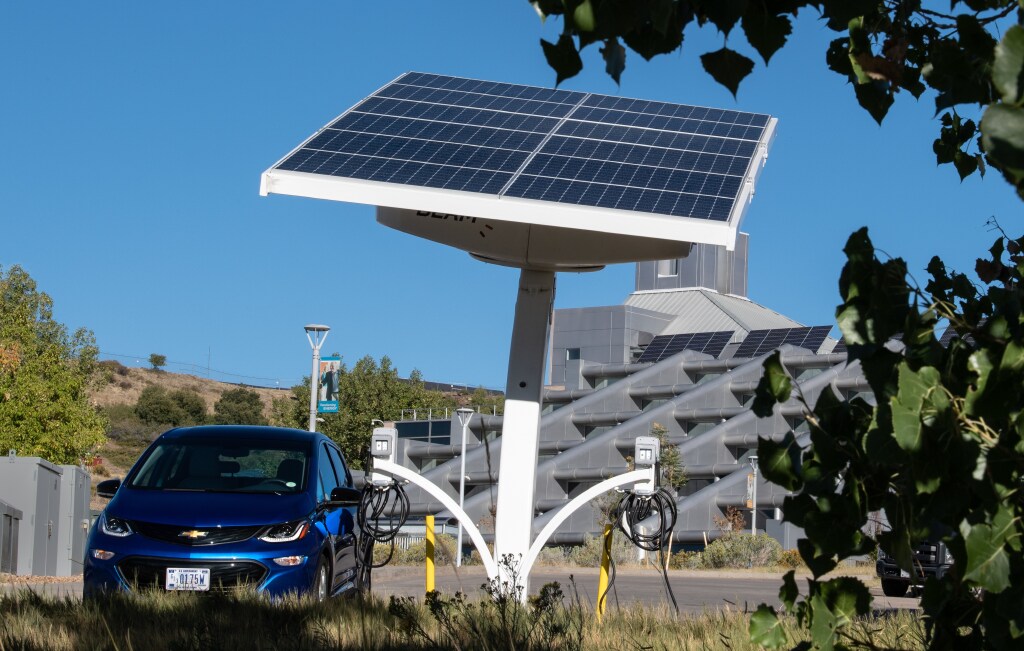
The current, wide-ranging benefits to using solar energy increase significantly when paired with an electric vehicle (EV). Harnessing the sun to power your vehicle saves you money, benefits the electric grid, and provides backup power to your home in the future.
There are five ways your EV could be solar powered:
- Rooftop Solar: Rooftop solar systems provide power to your home or building, which can be used to power your EV. Rooftop solar systems whether or not they are paired with battery storage systems can be optimized to power your car when you’re generating more electricity than you’re using—maximizing your solar savings.
- Solar-Powered Public Charging Stations: Need a charge on the road? Some public EV charging stations have installed onsite solar panels. Find your nearest charging station using one of the many apps available or the navigation built into your EV. You can also reference the National Renewable Energy Laboratory’s Fuel Data Center’s Station Locator. Although many of these apps do not differentiate which stations are solar-powered and which aren’t, it’s a great way to try different stations to find out.
- Community Solar: Community solar subscribers can use their share of a larger, shared solar array to power their EV by plugging into their home’s electricity supply.
- Vehicle-Attached/Added Photovoltaics: Solar modules can be attached to the existing vehicle structure to provide an extra boost for electrical systems on your car.
- Vehicle-Integrated Photovoltaics: Solar modules can be mechanically and electrically integrated into the design of a vehicle.
Combining solar energy with EVs creates many benefits, and as more solar energy and EVs join the electric grid, the U.S. Department of Energy Solar Energy Technology Office (SETO) works to understand how solar energy, in tandem with EVs, helps meet clean energy goals.
Generating Cost-Savings
By using the electricity from your own PV panels, you don’t need to pay your local electricity company to fill your tank, potentially saving you hundreds of dollars per year. If you’ve paid off your PV, that’s a free fill up. It’s also worth noting that by taking advantage of federal tax credits, you can lower your up-front costs by 30% for a solar system and up to $7,500 for an EV. Additional state and local incentives may also be available; check with your state, county and city government and your electric utility provider.
Improving Environmental Health
EVs have a lower carbon impact than gas-powered cars over their lifetimes—and as your local electricity mix becomes cleaner, your carbon impact will be even lower. To maximize the environmental benefits, use clean energy directly from the sun with a dedicated solar energy charging station to power your EV.
Providing Backup Power
While the technology is still developing, it is possible to use the power stored in an EV battery for your home during a power outage, emergency, or natural disaster. Most EVs have batteries large enough to power parts of a home for several days with the energy they store. Additionally, in using solar energy you can also charge your EV during an outage.
Benefiting the Electric Grid
Many EV owners choose to charge their EVs when electricity demand is lower-to reduce the strain on the local electricity grid. Charging your EV when you have plentiful solar generation can have the same effect—you can avoid putting strain on the grid by using your own solar generation. In areas with a lot of PV systems, it can even benefit the electric grid to charge your EV during the daytime, when the sun is shining and energy from those PV systems is most plentiful. Thankfully, the newest PV equipment automates the charge-scheduling question for you.
In certain areas, the number of chargers connected to the electric grid can be limited by the local utility’s infrastructure. Companies that want to provide EV charging for their employees typically run into this, where they can’t add more onsite chargers without expensive upgrades to their electrical service. By powering the chargers with local solar, this expense can be avoided.
How SETO Supports Solar Energy & EV Partnerships
SETO continues to study the relationship between solar energy and vehicles, especially how EVs and solar can be used to help grid operators and local jurisdictions decide where and how much solar and EVs can be added to the grid. To enable those decision-makers, SETO research is incorporated into DOE’s Electric Vehicle Infrastructure Projection Tool (EVI-Pro) Lite. This tool enables regulators and industry professionals to estimate the amount of electricity needed and the quantity of EV chargers required in an area to sustain a certain number of plug-in vehicles. SETO’s SolSmart program offers technical assistance and other support to help communities adopt solar and EVs.
According to SETO’s recent report on opportunities for vehicle photovoltaics, integrating PV into commercial trucks and trailers was identified as a significant opportunity for new technological innovations. These vehicles are driven during the day, have large, flat surfaces, and standardized vehicle shapes, all of which makes them promising applications for vehicle-integrated PV.
Learn more about SETO’s research and get involved in one of our funding programs.


